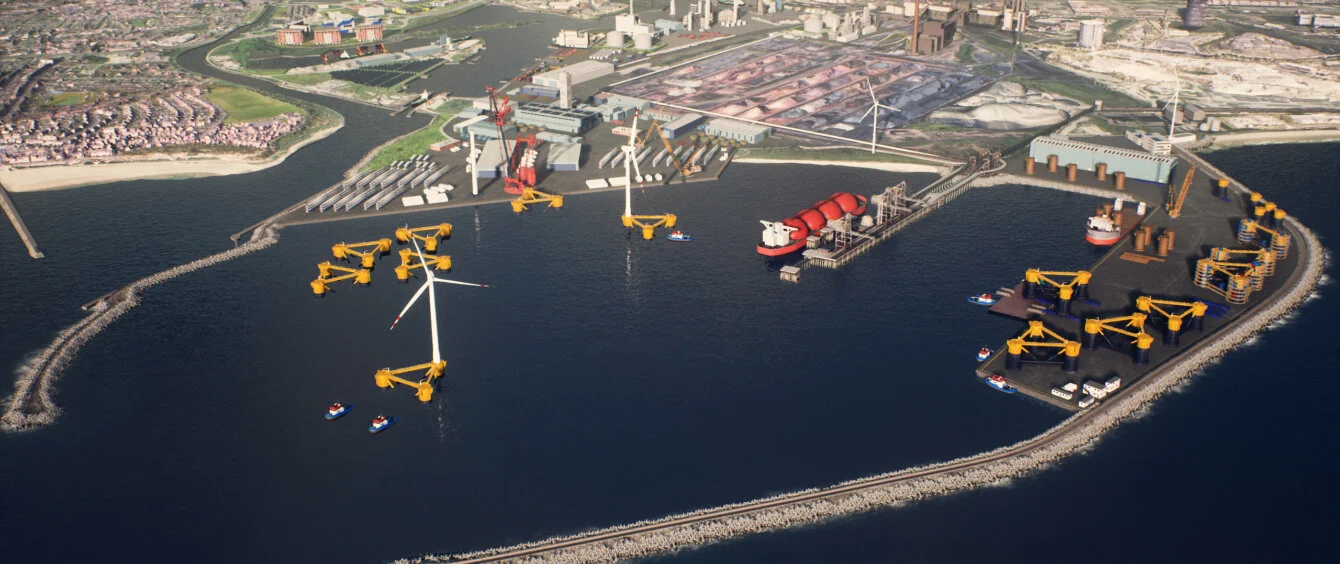There are just four floating offshore wind farms in existence, the largest of which is expected to be complete in Spring next year. In total, they have about 200 MW capacity. Yet the global pipeline of proposed projects is now a whopping 185 GW, spread across 230 projects, according to trade organisation renewableUK, and has more than doubled in the last year.
Taking a substantial lead is the UK, which has the largest project pipeline with 33,259 MW, followed by Sweden with 21,060 MW and then Ireland with 19,050 MW. In all cases, the volume of proposed projects exceeds by some margin these countries’ installed offshore wind capacities, whether floating or traditional fixed-bottom installations.
Floating wind, it would appear, is the next big thing in wind power.
Wind gets deeper
It’s not hard to see why. The deepest fixed-bottom wind farm, Seagreen, is being built in water depths of up to 59 metres, and while offshore wind developers have moved out to greater depths, 60 metres seems to be about the limit.
However, numerous countries have sea beds which fall sharply from shore, limiting the potential for fixed-bottom installations. Take, for example, the West Coast of Ireland, which has strong and reliable wind, but only a thin slice of seabed at less than 60 metres within its 12 nautical mile territorial limit.
Portugal’s Atlantic Coast and large parts of the Mediterranean have similar subsea topography. On the other side of the world, California has the same problem – huge wind potential on its Pacific coastline, but deep waters.
By using mooring lines and anchors to attach the wind turbines to the seabed, floating wind farms can be deployed in deeper waters, extending the wind resource available to all countries interested in or already generating clean power from offshore wind.
Performance and price
Another reason is performance. Although capacity factors are determined by many elements, the world’s first floating offshore wind farm, Hywind Scotland, recorded a 57.1% average capacity factor in the 12 months to March 2021, making it the best performing wind farm in the UK for the third year in a row. This has boosted market confidence in the technology.
Price is another consideration. Floating wind is more expensive than fixed bottom installations, but developers are confident that costs will fall just as rapidly as for onshore and traditional offshore wind. There is already evidence that costs are dropping. In July, the UK awarded a contract for difference for a floating offshore wind farm at a strike price of just £87.30/MWh, significantly lower than those agreed at a similar point of development for traditional offshore wind farms. When the first CFDs were first introduced in 2015, the UK had 5 GW of traditional offshore wind in operation. The strike prices awarded in the first round were between £114-£120/MWh (2012 real prices).
Floating wind lends itself well to factory-style onshore construction and promises lower installation and maintenance costs, as units can be towed to and from offshore sites relatively easily.
Floating offshore wind total portfolio by country
in MW, source: renewableUKInnovation is at the heart of floating wind
There is a huge amount of innovation taking place.
Different designs for floating wind are proliferating and more and more are undergoing trials at sea. Whether the best ultimately proves to be a spar, barge or tension leg platform hosting one turbine or more, nobody quite knows at present, but the machines deployed in even a few years’ time will almost certainly be more efficient, robust and cheaper than those deployed in the pioneer phase. They will benefit from continuous optimisation in terms of production and operation.
RWE is leading the way by participating in a number of pioneering floating wind concepts. These include DemoSATH, a concrete twin-hull barge structure made from modular prefabricated components. A 2 MW demonstration turbine will be deployed off Spain in 85 metres of water using a single point mooring, which will allow it to align naturally with the wind direction.
The TetraSpar Demonstrator employs a tubular steel structure with a suspended keel. It has a 3.6 MW turbine and is being tested in 200 metres of water off Norway. TetroSpar has been in operation since November 2021. In the US, RWE will demonstrate the VolturnUS concept, a concrete semi-submersible structure hosting an 11 MW turbine off the coast of Maine.
Celtic Sea to host first large-scale floaters
However, RWE’s most advanced plans are in the UK. The company is planning to develop at least 1 GW of floating wind in the Celtic Sea, using local ports and supply chains where possible.
RWE is currently assessing four floating platforms for the Celtic Sea, this includes working with a South Wales based floating platform developer Marine Power Systems, which is developing its Pelaflex floating platform. Two memorandums of understanding have already been reached between RWE and deep water ports, ABP Port Talbot and Pembroke Port, as well as with local steel manufacturer Tata Steel. The realisation of these plans would result in a substantial boost to the Welsh economy.
The UK government has set a target of 5 GW of floating wind by 2030 and is focussed on the Celtic Sea area in particular. The Crown Estate has defined a number of areas of search, which will be narrowed further to project development areas (PDAs), and expects to award four different PDAs to at least three different bidders next year. The wind farms proposed will be 1 GW in size and can be built in stages, which would mean a huge advance in scale for floating wind.
